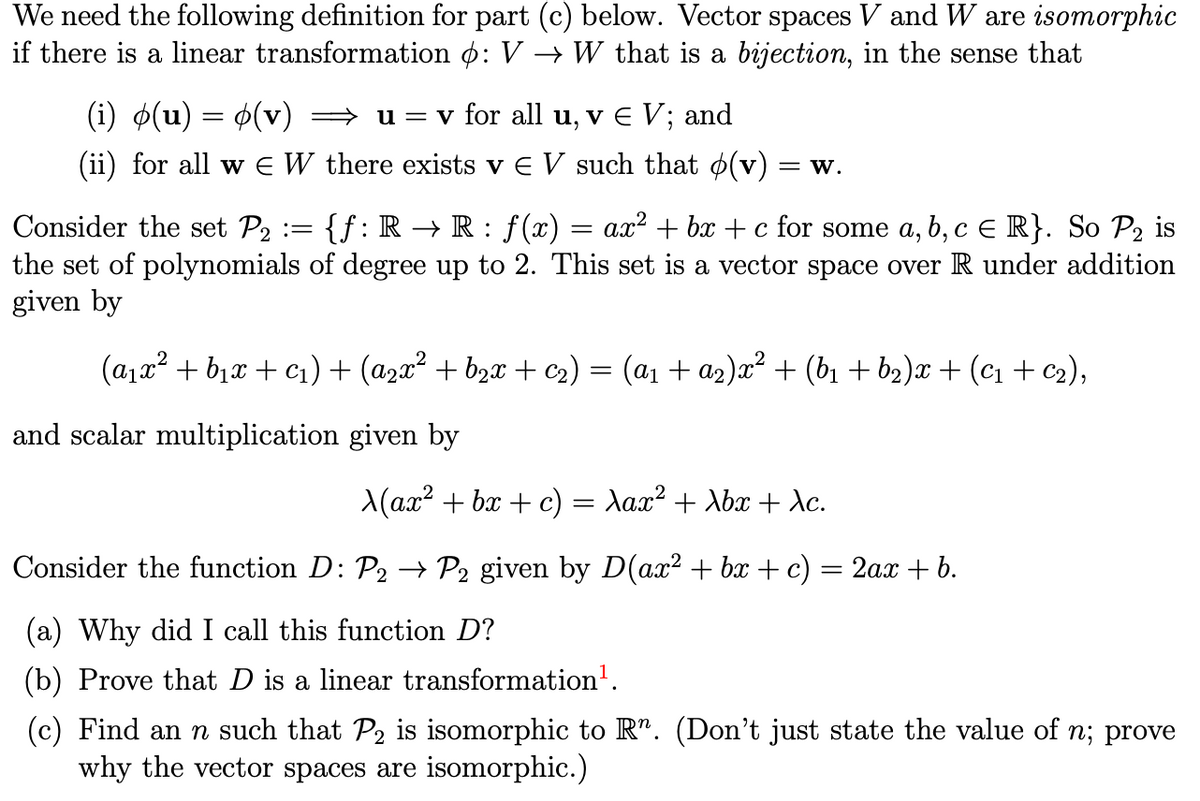Consider the function D: P₂ → P2 given by D(ax² + bx + c) = 2ax + b. (a) Why did I call this function D? (b) Prove that D is a linear transformation¹. (c) Find an n such that P₂ is isomorphic to R". (Don't just state the value of n; prove why the vector spaces are isomorphic.)
We need the following definition for part (3) below.
(i) φ(u) = φ(v) ⇒ u = v for all u, v∈V; and
(ii) for all w ∈ W there exists v ∈ V such that φ(v)=w.
Consider the set P2 := {f : R → R : f (x) = ax2 + bx + c for some a, b, c ∈ R}.
So P2 is the set of polynomials of degree up to 2. This set is a vector space over R under addition given by
(a1x2 +b1x+c1)+(a2x2 +b2x+c2) = (a1 +a2)x2 +(b1 +b2)x+(c1 +c2),
and scalar multiplication given by
λ(ax2 +bx+c) = λax2 + λbx + λc.
Consider the function D : P2 → P2 given by D(ax2 + bx + c) = 2ax + b.
a) Why did I call this function D?
b) Prove that D is a linear transformation 1.
c) Find an n such that P2 is isomorphic to Rn. (Don’t just state the value of n; prove why the vector spaces are isomorphic.)

Trending now
This is a popular solution!
Step by step
Solved in 2 steps




